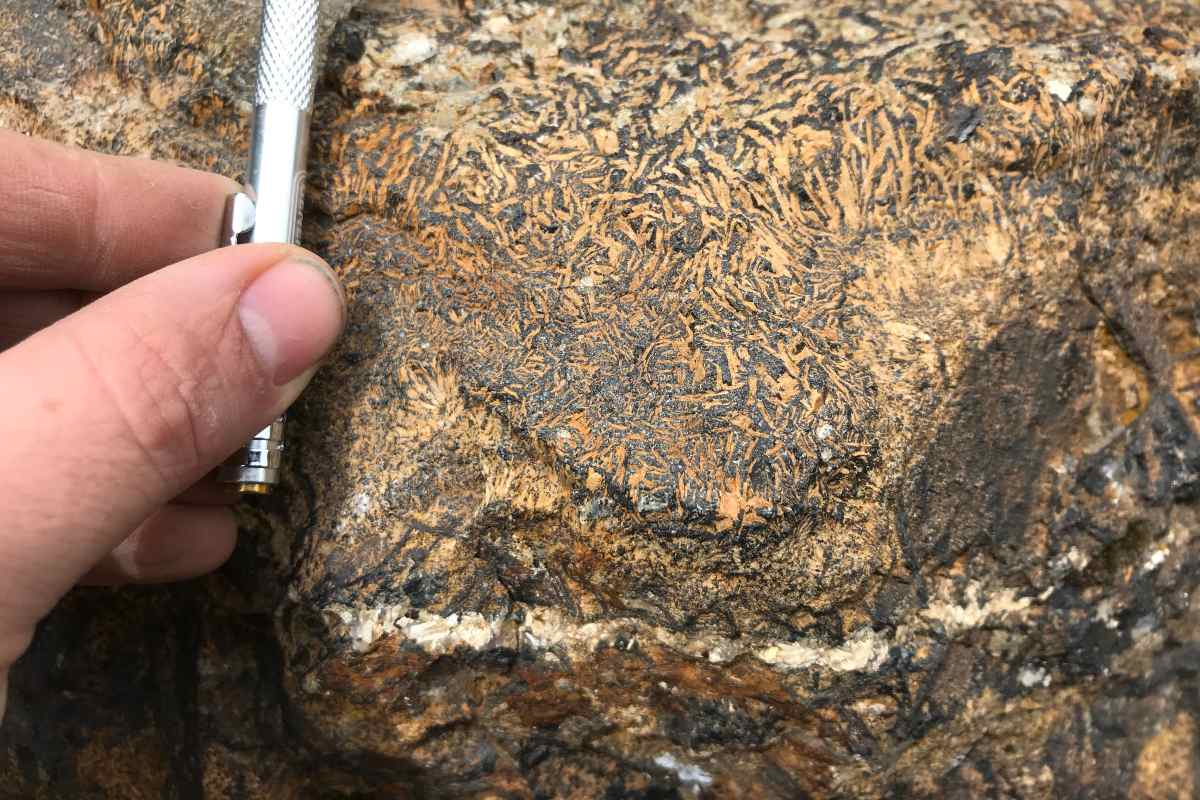
Iron oxide-apatite ore from one of the study areas at Iron Springs, Utah. Credit: Wyatt M. Bain.
University of Alberta scientists have uncovered the formation mechanism behind a class of mineral deposits that have been hotly contested until now. The findings shed new light on how iron deposits, among others, form—and this new understanding can aid geologists in the hunt for more ore.
“Most mineral deposits are formed by circulation of hot water; whereas some are formed by crystallization from a magma,” said Matthew Steele-MacInnis, assistant professor in the Department of Earth and Atmospheric Science. “In the case of Iron oxide-apatite deposits, nobody has been able to agree on how they are deposited, but our study now shows they are deposited from a very unusual liquid dominated by calcium carbonate and sulfate.”
The substance is a magma in a sense, explains Steele-MacInnis, but an unusual one and a formation process unknown until this study—led by PhD student Wyatt Bain under MacInnis’ supervision— and this context gives geologists new clues to guide the hunt for ore.
“The origins and chemical properties of ore-forming fluids are key parameters that determine whether a mineral deposit will form. In this case, our results show that the fluids that form iron oxide-apatite deposits are sourced by a very particular process: melting of limestones and/or salt deposits by injection of magma,” said Steele-MacInnis.
The results can be directly applied in exploration, explains Steele-MacInnis. Geologists looking for iron oxide-apatite deposits should target areas where magmatic rocks have been emplaced into sedimentary basins containing limestones or salt deposits.
And while the findings have the most immediate relevance for the hunt for iron deposits, Steele-MacInnis explains that this new understanding also has implications for some of our most cutting-edge technology.
“Iron oxide-apatite deposits have been mined for some years as sources of iron, which is probably the single most important metal for industrial applications and infrastructure,” said Steele-MacInnis. “But in recent years, these deposits have become even more attractive, because they commonly are enriched in key high-tech metals like rare Earth elements, which are critical to green-energy production and electronics.”
The paper, “A fundamental role of carbonate–sulfate melts in the formation of iron oxide–apatite deposits,” was published in Nature Geoscience (doi: 10.1038/s41561-020-0635-9).